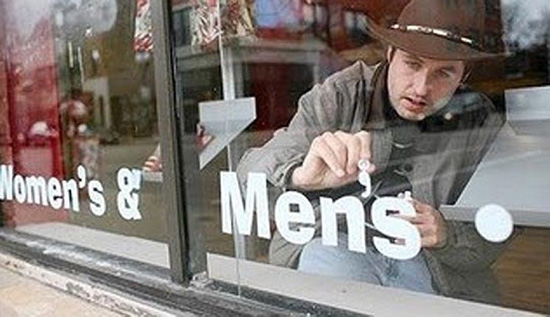 By Shelley Emling | The Huffington Post
By Shelley Emling | The Huffington Post
In honor of this very important holiday, we decided there’s no better time to reveal our biggest pet peeves when it comes to society’s lack of proper, well, punctuation.
We’ve covered the three common language mistakes that drive us nuts, and we’ve highlighted the four mispronunciations that put us over the edge. Now, with the help of our Facebook following, the misplaced semicolon doesn’t stand a chance.
In addition to the items listed below, many readers expressed an overall frustration with the way many Americans write. “Spelling is not considered punctuation, but the improper use of their, there and they’re drives me nuts,” said Scott Guiher.
What punctuation faux pas make you feel like fingernails on a blackboard? Be sure to let us know in the comments.
1) The misused apostrophe. This little squiggle sparks a whole lot of controversy–but the rules are pretty simple. To make a word plural, you add an “s” to it. To make a word possessive, you add an apostrophe, as in “my son’s book.” To make a plural noun ending in “s” possessive, you need only add the apostrophe, as in “my sons’ books.” Don’t use apostrophes to pluralize acronyms and abbreviations, such as CEOs and DVDs. And the plurals of numbers do NOT use apostrophes. It’s 1970s, not 1970’s.
2) The ubiquitous exclamation mark. Unless used sparingly, an exclamation mark doesn’t add any emotion to your statements!!!!! The pervasive use of the exclamation mark only dilutes the powerful feelings you may be trying to convey.
3) The crazy comma. John Garger, a copy editor and proofreader, said there’s usually a fine line between conjunctions that need a comma before them and those that don’t. When in doubt, he says to read the sentence aloud and see if you automatically pause. If that’s the case, use a comma. And don’t place a comma with words like “and” or “but” if the second sentence doesn’t include a subject. For more advice on how to use a comma correctly, click here.
4) The misplaced semicolon. People probably have more trouble with the semicolon than any other punctuation mark. But high school students are taught a simple rule of thumb that’s often forgotten over time: A semicolon should be used to separate two independent clauses (or complete sentences) that are closely related in meaning. Use colons, not semicolons, before a list of three or more items. And when items in a series themselves contain commas, separate them with semicolons. For example, you’d write: We visited Miami, Florida; Austin, Texas; and Salt Lake City, Utah.
5) The quotation mark. Quotation marks should be used to denote quotations. They should not be used to add emphasis to a word, which is sometimes the case in advertisements. If you are writing in American English, other punctuation marks should be placed inside the quotation marks, even if it’s not part of the quotation itself. If a question mark is part of the quotation, it goes inside the quotation marks. But a question mark follows the quotation marks if the question mark applies to more than just the exact quote.
6) The blurring of text talk with real writing. Simply put, 🙂 is not punctuation.











